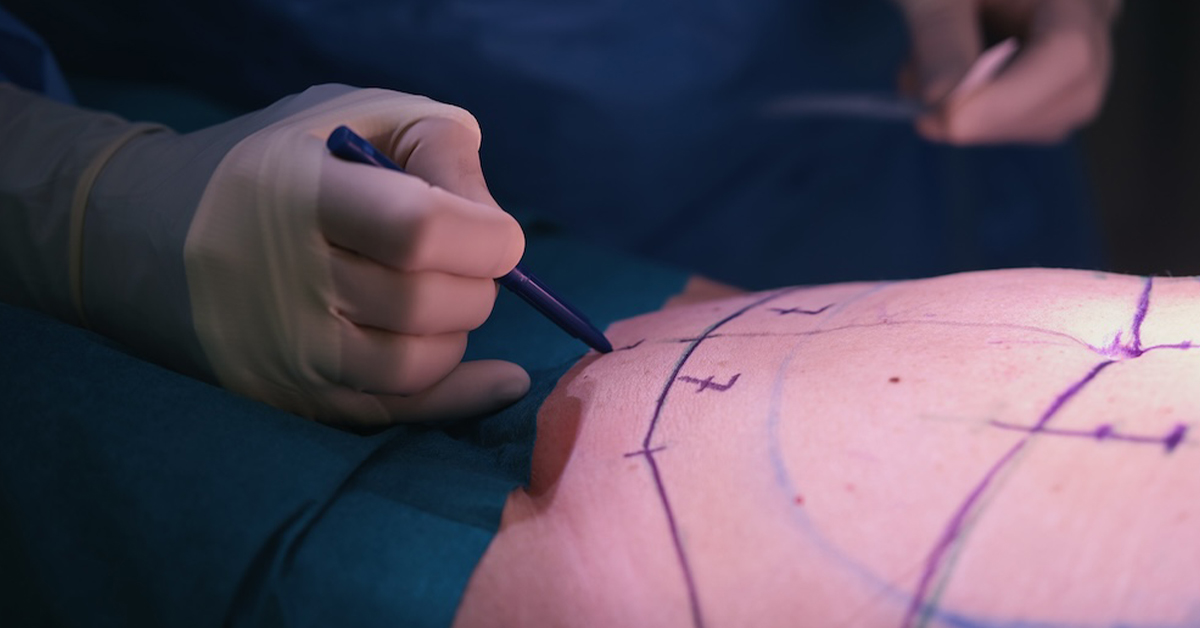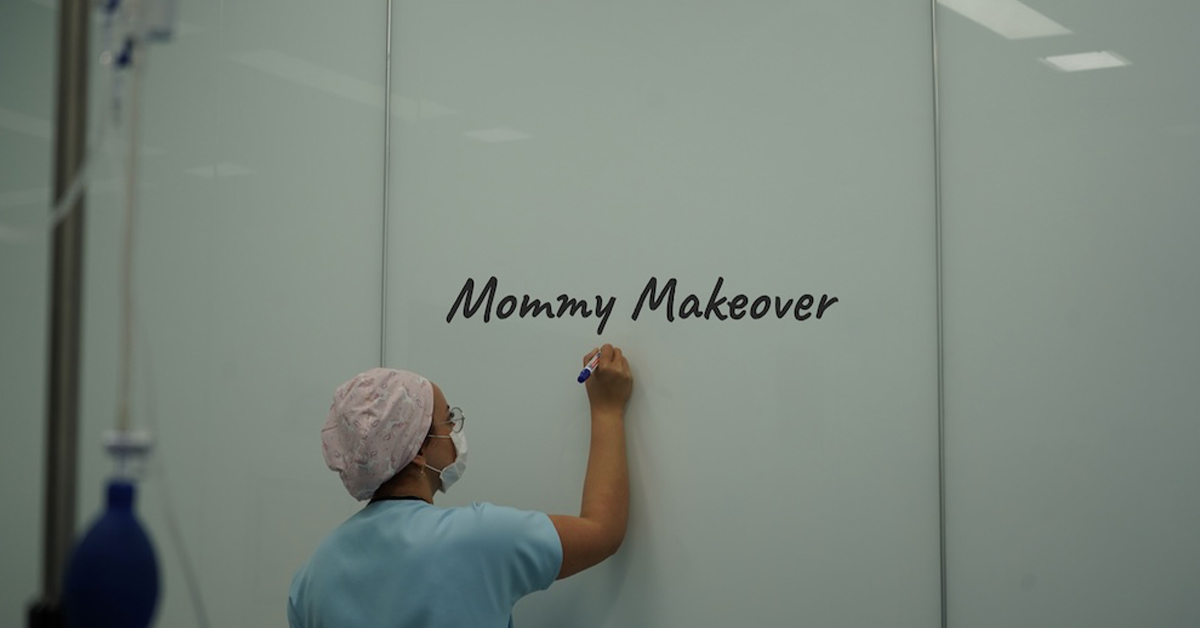Understanding Seroma After Tummy Tuck and BBL: Causes & Treatment
Seroma after tummy tuck and bbl surgery is a common occurrence that can cause discomfort and delay the recovery process. This condition refers to the buildup of clear-yellow fluid under the skin near the surgical site.
A seroma is a fluid collection that forms under the skin near the surgical site following a tummy tuck surgery, which can be a potential complication. The exact cause of seroma formation is not fully understood, but it is believed to be a result of tissue disruption and damage to the lymphatic vessels and blood vessels during the surgery.
The treatment options for seromas include needle aspirations, sclerotherapy, seroma catheter placement, and surgical excision. It is important to recognize the symptoms of seroma after tummy tuck and bbl surgery in order to seek appropriate medical care.
What is a Seroma and Why Does It Occur?
A seroma is a common complication that can occur after tummy tuck and bbl surgery. It refers to the accumulation of clear or yellowish fluid in the surgical cavity, which is the space created between the skin and underlying muscles during the procedure. This fluid consists of a combination of blood plasma, lymphatic fluid, and tissue fluid. While the exact cause of seroma formation is not fully understood, it is believed to be a result of tissue disruption and damage to the lymphatic vessels and blood vessels during the surgery.
Several factors can increase the likelihood of developing a seroma after tummy tuck and bbl surgery. These include undergoing extensive surgery, having a higher body mass index (BMI), or having a family history of seromas. Factors such as low protein intake or poor wound healing can also contribute to seroma formation. Additionally, surgical techniques that involve excessive tissue undermining or inadequate closure of the incision can disrupt the lymphatic drainage system and create spaces where fluid can collect.
While most seromas resolve on their own, larger or symptomatic seromas may require medical intervention. It is important to recognize the symptoms of seroma, which can include a balloon-like swelling in the abdominal area, clear or yellowish fluid drainage from the incision, and discomfort or pain near the surgical site. If you experience any of these symptoms, it is crucial to consult a healthcare provider for an accurate diagnosis and appropriate treatment.
| Seroma Causes | Risk Factors |
|---|---|
| Tissue disruption during surgery | Extensive surgery |
| Damage to lymphatic vessels and blood vessels | Higher BMI |
| Low protein intake | Family history of seromas |
| Poor wound healing |
Successful treatment options for seroma after tummy tuck and bbl surgery include needle aspirations, sclerotherapy, seroma catheter placement, and surgical excision. Needle aspirations involve using a thin needle to drain the fluid from the seroma, while sclerotherapy involves injecting a medication into the seroma cavity to promote closure. Seroma catheter placement allows for continuous drainage of the fluid, and surgical excision may be necessary for persistent or recurrent seromas. In addition to medical treatment, following postoperative care instructions, such as limiting physical activity and wearing compression garments, can help promote healing and prevent seroma recurrence.
Risk Factors and Causes of Seroma After Tummy Tuck and BBL Surgery
Several factors can contribute to the development of seroma after tummy tuck and bbl surgery. Understanding these risk factors and causes can help you be better prepared and minimize the chances of experiencing this postoperative complication.
Risk Factors
-
Extent of the surgical procedure: Extensive surgery, especially when combined with other procedures like liposuction, increases the risk of tissue disruption and fluid accumulation.
-
Disruption of tissues and blood vessels: During surgery, the disruption of tissues and blood vessels can lead to impaired lymphatic drainage, creating spaces where fluid can collect.
-
Obesity: Higher body mass index (BMI) is associated with a higher risk of seroma formation due to increased tissue disruption and impaired healing.
-
Impaired healing: Factors like low protein intake or poor wound healing can influence seroma development.
-
Family history of seromas: If you have a family history of seromas, you may have an increased susceptibility to developing this complication.
-
Surgical techniques: Excessive tissue undermining or inadequate closure of the incision can disrupt the lymphatic drainage system and create spaces for fluid accumulation.
Causes
The exact cause of seroma formation is not fully understood, but it is believed to be a result of tissue disruption and damage to the lymphatic vessels and blood vessels during the surgery. The surgical procedure creates a pocket between the skin and underlying muscles, and when this pocket is closed, fluid may accumulate in the space, leading to the formation of a seroma.
It’s important to note that while these risk factors and causes increase the likelihood of developing a seroma, they do not guarantee its occurrence. Each individual’s experience with seroma after tummy tuck and bbl may vary.
Risk Factors and Causes of Seroma After Tummy Tuck Surgery
| Risk Factors | Causes |
|---|---|
| Extent of the surgical procedure | Tissue disruption and damage to lymphatic vessels and blood vessels |
| Disruption of tissues and blood vessels | Creation of space for fluid accumulation during surgery |
| Obesity | Increased tissue disruption and impaired healing |
| Impaired healing | Low protein intake or poor wound healing |
| Family history of seromas | Susceptibility to seroma development |
| Surgical techniques | Excessive tissue undermining or inadequate closure of the incision |
Recognizing the Symptoms of Seroma After Tummy Tuck Surgery
After undergoing a tummy tuck and bbl, it is important to be aware of the potential symptoms of seroma, a common complication. By recognizing these symptoms, you can seek appropriate medical care and ensure proper treatment. The key symptoms to watch out for include:
-
Balloon-like swelling in the abdominal area
-
Clear or yellowish fluid drainage from the surgical incision
-
Discomfort or pain near the incision site
These symptoms typically arise within the first few weeks after surgery and can cause a visible bulge or distortion in the abdominal contour. If you experience any of these symptoms, it is crucial to consult a healthcare provider for an accurate diagnosis and the necessary treatment.
“Balloon-like swelling, fluid drainage, and discomfort or pain near the incision site are common signs of a seroma after tummy tuck surgery. Prompt medical attention is crucial for a successful recovery.”
Remember, early detection and intervention can greatly prevent complications and ensure a smooth recovery process. Seeking medical care for seroma symptoms is essential to receive appropriate treatment and avoid any potential risks. Your healthcare provider will conduct a thorough evaluation and determine the most suitable course of action for your specific situation.
Treatment Options for Seroma After Tummy Tuck Surgery
Seromas after tummy tuck and bbl surgery can be effectively treated through various medical interventions and postoperative care. The treatment options for seromas include:
-
Needle aspirations: This procedure involves using a thin needle to puncture the seroma and drain the fluid. It is a minimally invasive approach that can provide immediate relief and promote healing.
-
Sclerotherapy: In this treatment, a medication is injected into the seroma cavity, causing irritation and inflammation that leads to the closure of the space. Sclerotherapy is useful for seromas that are difficult to aspirate or have a high chance of recurrence.
-
Seroma catheter placement: For larger or persistent seromas, a catheter may be inserted to provide continuous drainage. This allows for the gradual removal of fluid over time and can be done on an outpatient basis.
-
Surgical excision: In cases of recurrent or persistent seromas, surgical excision may be necessary. The surgeon removes the entire seroma sac, ensuring the complete elimination of the fluid collection.
It is crucial to follow postoperative care instructions to promote seroma healing and prevent recurrence. These instructions may include:
-
Limiting physical activity: Avoid strenuous activities that can increase pressure and strain on the surgical site, as this can contribute to seroma formation.
-
Applying warm compresses: Warm compresses can help promote blood circulation and reduce inflammation, aiding in the absorption of the seroma.
-
Keeping the incision clean and dry: Proper wound care is essential to prevent infection and complications. Follow the recommended cleaning and dressing instructions provided by your surgeon.
-
Wearing compression garments: Compression garments help reduce swelling and provide support to the surgical area, promoting proper healing and minimizing the risk of seroma development.
By seeking appropriate medical care and adhering to postoperative instructions, seromas can be effectively managed, allowing for a smoother recovery after tummy tuck surgery.
Seroma Prevention After Tummy Tuck Surgery
Preventing seroma after tummy tuck and bbl surgery is an important aspect of ensuring a smooth recovery. While it may not be possible to completely eliminate the risk, there are steps you can take to minimize the chances of developing a seroma. Here are some key preventive measures:
-
Choose a qualified plastic surgeon: When considering tummy tuck surgery, it is crucial to select a skilled and experienced plastic surgeon. A qualified surgeon will assess your medical history, perform a thorough examination, and take necessary precautions to reduce the risk of complications, including seroma formation.
-
Follow postoperative instructions: Your surgeon will provide you with specific postoperative care instructions. It is important to follow these instructions diligently to promote proper healing and reduce the risk of seroma. This may include wearing compression garments as recommended, avoiding strenuous activities, and keeping the incision clean and dry.
-
Maintain a healthy lifestyle: Leading a healthy lifestyle can contribute to better wound healing and reduce the risk of seroma formation. Maintain a balanced diet rich in protein, vitamins, and minerals to support your body’s healing process. Quit smoking if you are a smoker, as smoking can impair healing and increase the risk of complications.
-
Attend follow-up appointments: Regular follow-up appointments with your plastic surgeon are important to monitor your recovery progress. Your surgeon will assess the incision site, address any concerns, and provide further guidance on seroma prevention and management.
By following these preventive measures and working closely with your plastic surgeon, you can minimize the risk of developing a seroma after tummy tuck and bbl surgery. However, it is important to remember that every individual and surgical case is unique, and complications can still occur. If you notice any concerning symptoms or if the seroma worsens, it is essential to contact your healthcare provider for guidance and appropriate care.
| Preventive Measures | Description |
|---|---|
| Choose a qualified plastic surgeon | A skilled and experienced plastic surgeon will take necessary precautions to minimize the risk of seroma formation during and after tummy tuck surgery. |
| Follow postoperative instructions | Adhering to the instructions provided by your surgeon, such as wearing compression garments and limiting physical activities, will aid in proper healing and reduce seroma risk. |
| Maintain a healthy lifestyle | Eating a balanced diet rich in protein and nutrients, and quitting smoking, can support wound healing and lower the risk of seroma formation. |
| Attend follow-up appointments | Regular check-ups with your plastic surgeon will ensure proper monitoring of your recovery progress and enable timely intervention if necessary. |
Conclusion
Seroma after tummy tuck and bbl surgery is a common complication that can be effectively managed with appropriate medical care and self-care measures. Understanding the causes, symptoms, and treatment options for seroma is essential for a successful recovery.
With prompt medical intervention and proper postoperative care, seromas can be treated and the risk of complications can be minimized. If you experience any concerning symptoms or if the seroma worsens, it is important to contact a healthcare provider for guidance and follow-up care.
While seromas are not completely preventable, working with a qualified plastic surgeon who takes necessary precautions can help reduce the risk of developing a seroma after tummy tuck and BBL surgery. Additionally, wearing compression garments as recommended can aid in reducing swelling and promoting skin healing.
Remember, seeking medical care for seroma after tummy tuck surgery is crucial in order to prevent potential complications. By staying informed and taking the necessary steps for treatment and prevention, you can have a smoother recovery process and minimize the impact of seroma on your overall wellbeing.
Tummy Tuck and BBL in Miami, FL
Begin your journey towards achieving a stunning figure with a Tummy Tuck and Brazilian Butt Lift (BBL) by scheduling a consultation with us. To dive deeper into the details and discover more about these transformative procedures, feel free to give us a call at (305) 406-9055 or conveniently schedule your consultation online.







